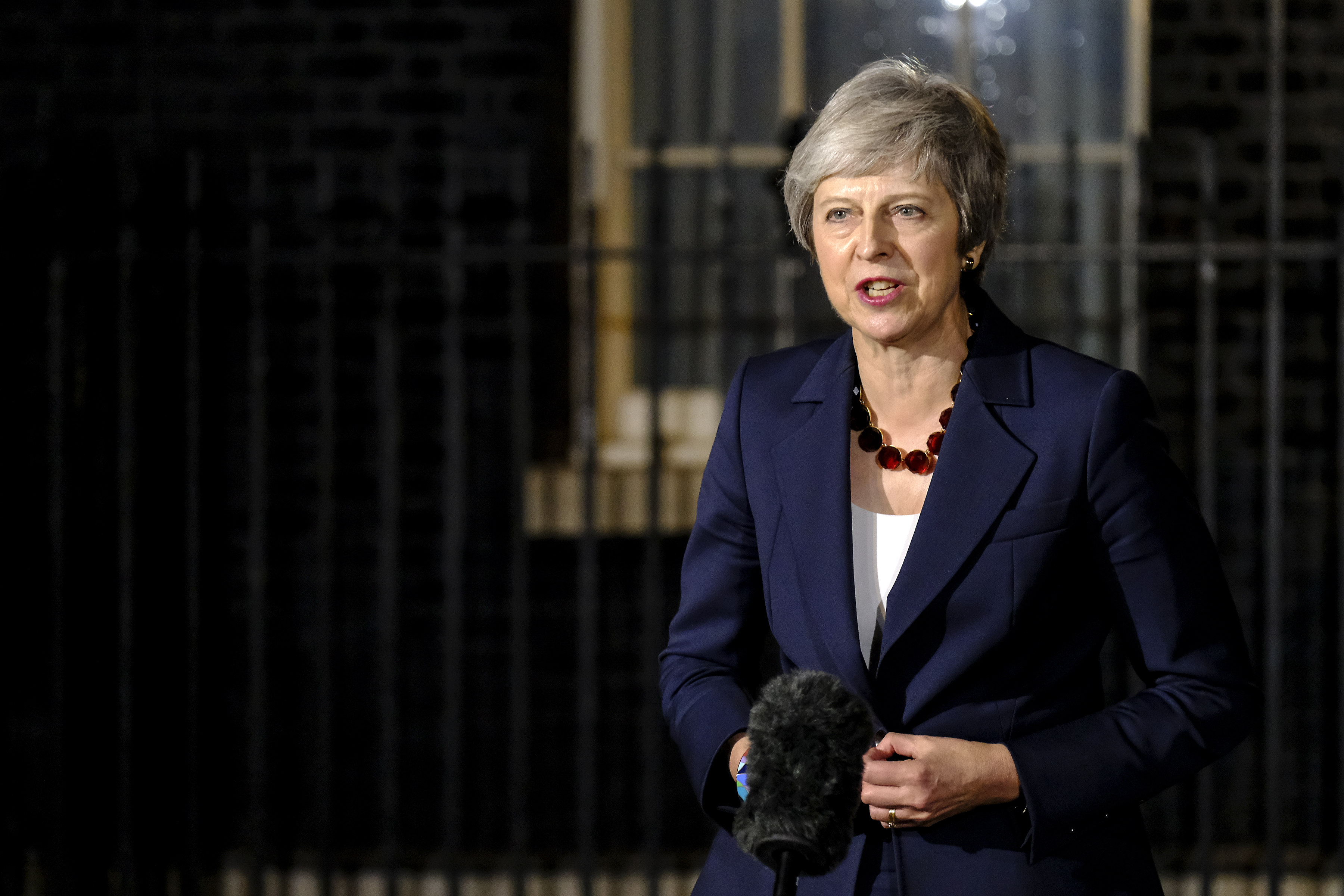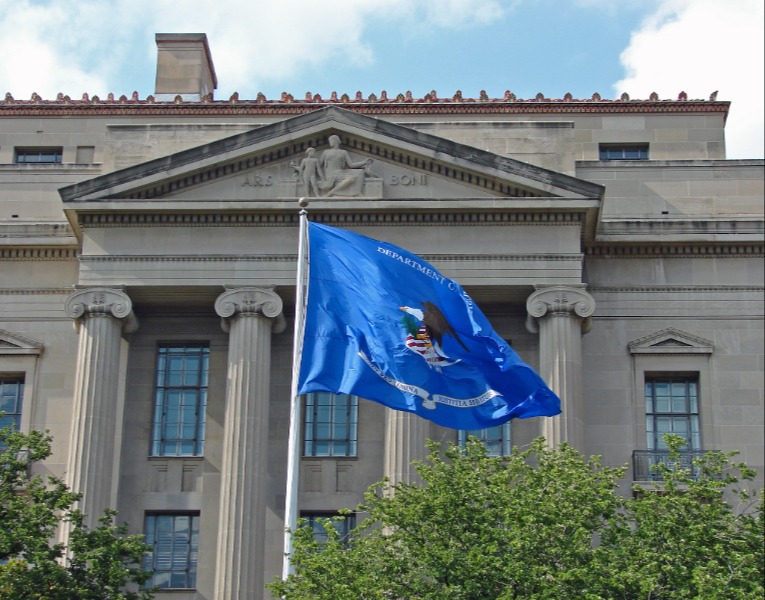The Brexit Endgame: Deal or No Deal?
Editor’s Note: The article originally appeared on Order from Chaos.

Published by The Lawfare Institute
in Cooperation With

Editor’s Note: The article originally appeared on Order from Chaos.
On November 14, British Prime Minister Theresa May presented her cabinet with a draft withdrawal agreement and a political declaration on the U.K.’s future relationship with the European Union (EU). After 18 months of negotiations with the EU and five contentious hours of cabinet debates, an exhausted May emerged from Downing Street to announce a deal had been reached. But this saga is far from over: Less than 24 hours later, several ministers have resigned, the pound has crashed, and members of Parliament heckled her.
How Did We Get Here?
In a June 2016 referendum, British voters chose to leave the European Union by a narrow margin of 51.9 to 48.1 percent. In March 2017, May formally notified the EU of her country’s intention to withdraw from the union. Divorce talks began in June 2017, soon after she held snap general elections. After nearly 18 months of negotiations, the sides reached an agreement this week.
What Does the Deal Contain?
The withdrawal agreement establishes the terms of divorce, ensuring it happens in an orderly manner and providing legal certainty once EU treaties and law no longer apply to the U.K. Here is the Cliffs Notes version of its key components, with details in a useful European Commission fact sheet:
- Separation issues, enabling a smooth winding down of current arrangements (e.g., protect existing intellectual property rights, conclude police and judicial cooperation on criminal matters, enable goods placed on the market to reach their destination)
- Financial settlement, ensuring both sides meet all financial obligations undertaken while the U.K. was an EU member
- Citizens’ rights, protecting the rights of over 3 million EU citizens in the U.K. and over 1 million U.K. nationals in EU countries
- Northern Ireland backstop, ensuring no hard border between Ireland and Northern Ireland and protecting the rights enshrined in the Good Friday Agreement
- Protocols for Cyprus and Gibraltar, respectively protecting the interests of Cypriots who live and work in the Sovereign Base Areas and enabling close cooperation with Spain on the rights of citizens living in Gibraltar
Why Did Northern Ireland Complicate Brexit Talks? And Has It Been Resolved?
The challenge of satisfactorily meeting the requirements of Northern Ireland’s unique circumstances has hindered negotiations and could still preclude a successful deal. The U.K. is currently part of the EU’s customs union and single market, but it will leave both after Brexit. This will raise the status of the Irish border to that of a customs border, with associated checks and controls. In addition to creating practical and economic challenges, this is politically and psychologically unimaginable for many who lived there during decades of conflict.
Although the British government pledged to avoid a hard border with Northern Ireland, there were initially no formal proposals for achieving this aim or certainty it could be addressed within the future U.K.-EU relationship. As a result, the EU added a “backstop” provision to a joint report during an early phase of negotiations: If London is unable to devise alternative arrangements, it said Northern Ireland will remain in the EU customs union and in “full regulatory alignment” (at least for goods) with the single market. This eliminates the need for checks and controls at the Irish land border, pushing them to sea and air entry points to the island of Ireland. Northern Ireland’s Democratic Unionist Party (DUP)—whose 10 members of Parliament prop up May’s government—balked at the creation of an economic frontier between Great Britain and Northern Ireland, forcing the addition of a clause preventing “new regulatory barriers” to trade within the U.K.
After months of negotiations, it was clear the British government’s stated aims—preventing a hard border with Ireland, leaving the EU single market and customs union, and ensuring a countrywide approach to Brexit—were impossible to reconcile. The present withdrawal agreement does not fully resolve this “trilemma” but punts it to the transition period. In a change from earlier drafts, the current backstop keeps the entire U.K.—not just Northern Ireland—aligned with the EU customs union. Yet it also requires Northern Ireland to follow regulatory measures related to the single market, including on goods and food, to eliminate the need for border checks. This agreement is not time-limited and the U.K. cannot unilaterally withdraw; a joint committee of EU and U.K. representatives, which will continually review procedures, must consider a request from either side to end the arrangement. While London hopes to negotiate a future economic agreement with the EU that eliminates the need for a backstop, critics fear the country could remain permanently bound by these customs union provisions.
What Happens Next?
After May secured the “collective” decision (i.e. not unanimous consent) of her cabinet, the 585-page document was sent to the other 27 EU member states, which must sign off on the text negotiated on their behalf by the European Commission. EU negotiator Michel Barnier announced “decisive progress” in the talks, which paved the way for a meeting of European affairs ministers on November 19 and a special leaders summit on November 25.
Now comes the hard part, as May must sell the deal to a deeply divided Parliament. In the hours before her November 15 speech to a raucous legislature, several ministers—including Brexit Secretary Dominic Raab—resigned from her cabinet. Based on Westminster’s reaction to her statement, she does not appear to have sufficient support to win this “meaningful vote” given opposition from all sides: pro-Brexit MPs from the Conservative party’s European Research Group, Remain-backing Conservative MPs, Scottish Conservative MPs (concerned about the rights of fishermen), Scottish National Party MPs, Northern Ireland’s Democratic Unionist Party, and Labour MPs (who either oppose Brexit or do not want to bail out May).
If the British Parliament ratifies the agreement, the European Parliament must approve the deal; this process will take several weeks but should be straightforward. Irish Taoiseach Leo Varadkar also announced his country’s parliament will get a vote, with wide support expected.
All of these procedures must be concluded before Brexit takes effect on March 29, 2019. There will be a 21-month transition period—which can be extended—to allow citizens and businesses to adjust. During this period, the EU will treat the U.K. as if it were still a member with all rights and responsibilities—except it will no longer participate in the decisionmaking process. The two sides will use this time to negotiate the future relationship (e.g., free trade agreement). If they fail to reach an agreement by December 31, 2020 (or extend the transition period), the Northern Ireland backstop will take effect.
What If Parliament Fails to Ratify the Deal?
If Parliament fails to ratify the withdrawal agreement, all bets are off. Possibilities include a leadership challenge to May, new general elections, or another referendum.
Some analysts are predicting Parliament could ratify the agreement in a second attempt, citing American congressional handling of the 2008 financial bailout (TARP, Troubled Asset Relief Program). Although that bill was initially defeated in the House, fears of global economic chaos and tweaks by the Senate led a sufficient number of legislators to reverse course several days later and support the measure. Geo-economic pressure could focus minds in London too.
Meanwhile, all sides are still preparing for a no-deal scenario. This would see the U.K. leave the EU with no trade arrangement and return to World Trade Organization (WTO) rules, which would impose significant customs, tariffs and regulatory costs as well as require checks at the Irish border.





